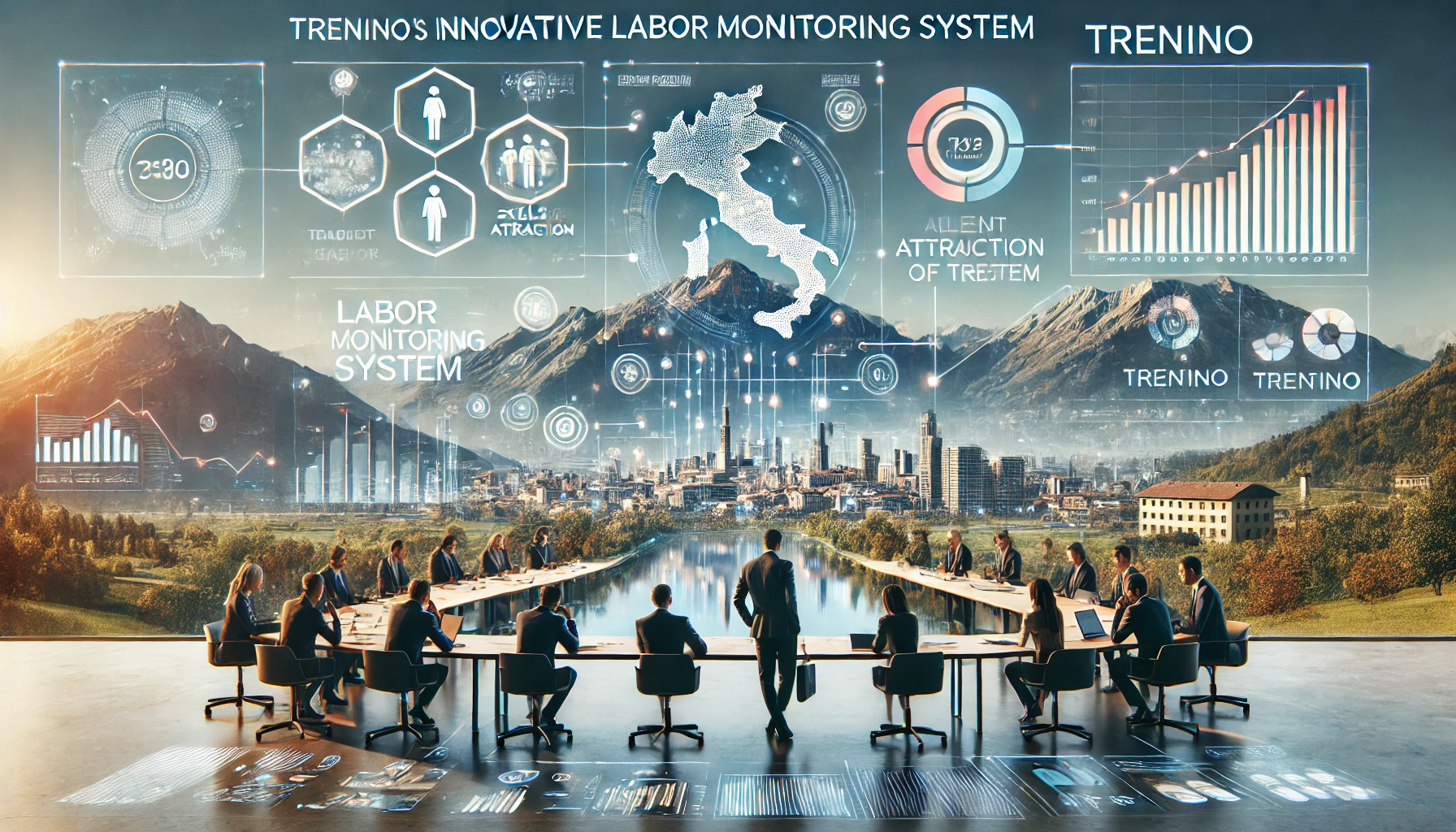Data-Driven Workforce Solutions: Trentino's Model for Skills Matching Success
Trentino, Italy, uses an integrated labor monitoring system combining national surveys, local firm data, and real-time workforce tracking to address skills mismatches and adapt policies swiftly. This data-driven approach has boosted regional resilience, attracting skilled talent and supporting economic adaptability.

The Autonomous Province of Trento in Italy has pioneered an integrated monitoring system aimed at addressing labor and skills mismatches, developed in collaboration with institutions like the Trento Agency for Labour, and the Trento Chamber of Commerce, and supported by data from the Italian Chambers of Commerce through the Excelsior survey. This effort, documented in research from the OECD, highlights how a coordinated approach across public and private sectors can foster labor market responsiveness and adaptability. By drawing on national surveys, local firm data, and real-time workforce tracking, the system enables Trentino to monitor labor market trends comprehensively and make data-driven policy interventions aligned with regional economic needs. This strategy has been particularly effective in managing sectoral shifts, especially during times of economic change, and allows policymakers to address emerging skills shortages swiftly. Through this monitoring model, Trentino has been able to assess recruitment challenges, identify sector-specific skills gaps, and deploy policy responses that enhance regional workforce development.
A Comprehensive Monitoring System in Action
The monitoring system employs multiple data streams, each serving a unique function to create a holistic view of Trentino’s labor market. Data from the Excelsior survey, managed by the Italian Chambers of Commerce, collects insights from over 500,000 firms across Italy, offering detailed information on recruitment needs, market demand, and skills shortages across sectors. With regional data disaggregation, Trentino can assess its local labor market in comparison to broader national trends, which helps refine the region’s workforce strategy. Complementing this, the Trento Chamber of Commerce conducts quarterly local economic surveys, which track business conditions, hiring intentions, and future outlooks among local firms. These surveys, adaptable to real-time issues, have proven valuable in understanding the shifts in workforce demands following disruptions like the COVID-19 pandemic, which spurred a new wave of remote work. Additionally, Trentino uses real-time data from the “comunicazioni obbligatorie” system, wherein firms report monthly on hirings, terminations, and contract adjustments. This information provides granular insights into workforce flows, capturing data by sector, gender, age, and contract type, which further informs targeted interventions.
Cross-Sectoral Collaboration for a Robust Labor Market
An essential aspect of Trentino’s system is its collaborative approach, facilitated by the Provincial Labour Market Observatory. This body brings together data providers, social partners, and public institutions, creating a centralized framework that cross-references multiple data sources. For instance, the Trento Agency for Labour cross-references hiring demands from the Excelsior survey with actual hiring data from the “comunicazioni” system, establishing an initial measure for assessing mismatches between labor supply and demand. By tracking job postings on its employment portal and comparing them with hiring records, the agency gains additional insight into unmet demand, further refining the labor market analysis. Another critical component is the collaboration between the Trento Agency for Labour and the Provincial Institute of Statistics (ISPAT), which produces quarterly employment reports. While the Trento Agency focuses on jobs within the province, ISPAT monitors employment trends for Trentino residents, even those working outside the region, giving a fuller picture of regional employment dynamics.
Strategic Outcomes: Talent Attraction and Remote Work
The impact of this integrated approach is substantial. Leveraging insights from its monitoring system, Trentino launched the “Trentino for Talent” project in February 2023 to address local skills shortages in high-demand fields like engineering and IT. Jointly run by Trentino Sviluppo and the Labour Agency, this initiative combines targeted marketing with job-matching services, attracting highly skilled professionals to the region and enhancing local economic resilience. By mid-October 2024, the project had received 745 applications and successfully matched 68 candidates with open positions, effectively closing critical skills gaps. Another significant outcome was the development of a teleworking strategy, spurred by COVID-19, which allowed businesses to transition smoothly to remote operations. This strategic foresight also positioned Trentino to explore hybrid work models that could expand the talent pool by allowing people to live further from their workplace, potentially easing urban density pressures and expanding regional connectivity.
Lessons for Global Workforce Adaptability
Trentino’s monitoring system has been instrumental in the region’s economic evolution over recent decades. Following a marked decline in manufacturing employment in the 1980s, Trentino’s labor policies shifted focus to service sectors, especially knowledge-based industries. This transition, supported by data-driven decisions from the monitoring system, helped the region stabilize employment rates and increase average incomes. Programs like Progettone, designed to re-employ workers after mass layoffs, benefited from timely labor data, allowing policymakers to respond to economic challenges with targeted workforce development initiatives. Today, Trentino’s workforce resilience strategy serves as a model of how integrated data and coordinated public policy can foster long-term economic adaptability. For other regions facing similar challenges, Trentino’s experience offers valuable lessons. Integrating diverse data sources, maintaining real-time data on hiring and dismissals, and fostering collaboration between public institutions and social partners are key factors in building a responsive labor market system. Flexible survey designs that adapt to changing trends, such as skills shortages, add another layer of responsiveness. By utilizing predictive analytics based on integrated data, Trentino has shown that anticipating labor market shifts allows policymakers to act proactively, designing targeted interventions before issues escalate. The success of Trentino’s model demonstrates that a robust, data-driven monitoring system can create a resilient labor market, offering a practical and adaptable solution for regions worldwide seeking to address labor and skills mismatches effectively.
- FIRST PUBLISHED IN:
- Devdiscourse










